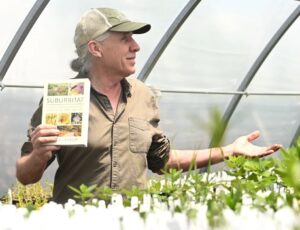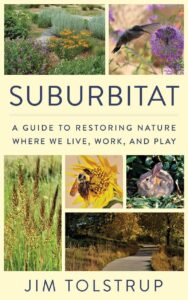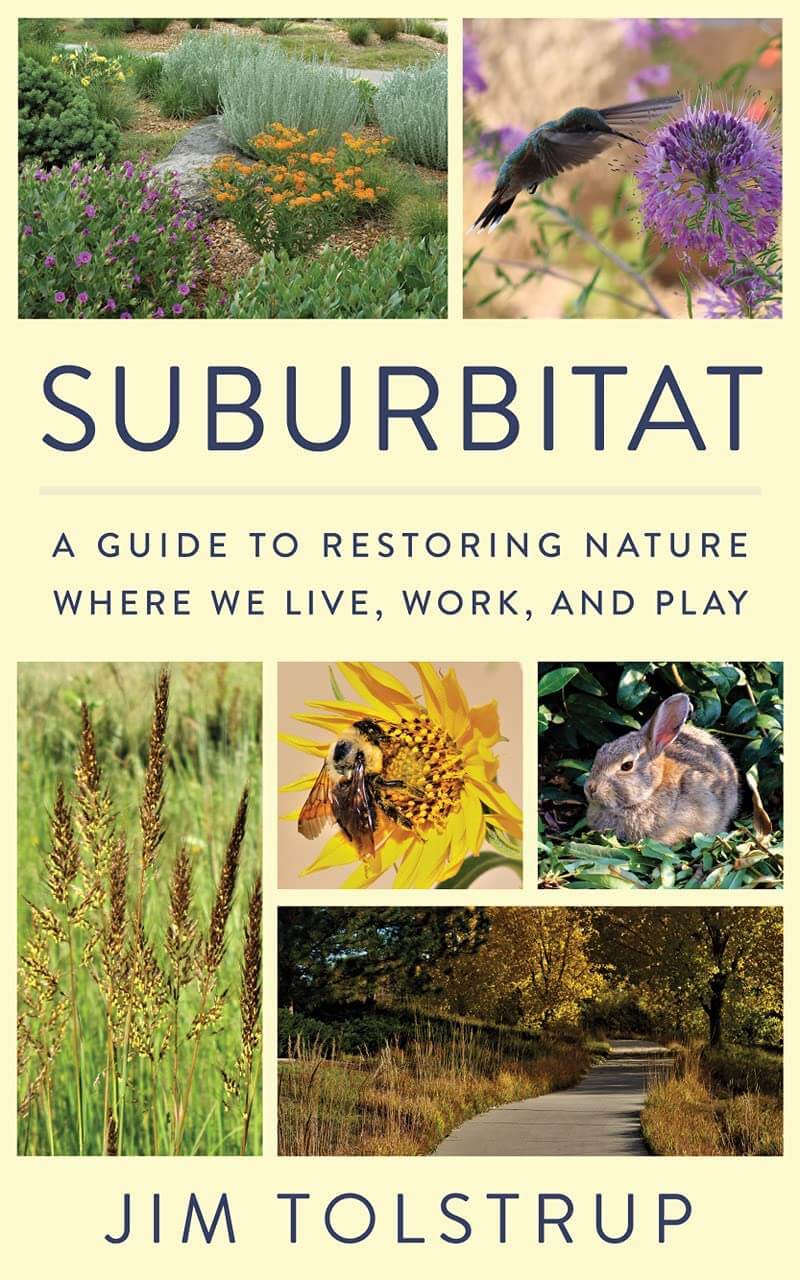At home with nature in the Rocky Mountain garden
Expert guide breaks down soil, climate and the urgent need to plant natives
Expert guide breaks down soil, climate and the urgent need to plant natives
“If you can read a book, you can do anything.” So said my best friend Gregory in high school, and he was right. That bit of advice has stood me in good stead as a gardener and writer. I’ve packed in a lot of reading while researching the history of garden design and landscaping for the books I’ve written. And books on gardening how-to have helped me adapt my gardening skills to a variety of locales—from London to rural Norfolk in England, and from Texas to Iowa to Colorado Springs in the USA. Suburbitat: A Guide to Restoring Nature Where We Live, Work, and Play by Jim Tolstrup is the book I wish I’d had in hand when digging my first spadefuls of Rocky Mountain … I can’t call it soil … how about pre-historic sand dune?

Jim Tolstrup
Tolstrup is the guide we should all have to lead us into this strange land where there are six seasons, sometimes eight, the climate is dry, very dry, the air is thin and strong sunlight punishes plants and complexions. All of these factors make gardening with arid-loving plants, mostly natives, a no-brainer. As Tolstrop’s book emphasizes, these same conditions encourage one’s instincts to garden sustainably, and to do so inclusively to the benefit of our local fauna. As renowned ecologist Doug Tallamy says of Suburbitat, it will “…motivate landowners to embrace their environmental responsibilities no matter what ecosystem they live in.” Having gardened in five different climate zones, I can testify that Tallamy’s recommendation is spot on.
Tolstrup earned his knowledge of native habitats over a long career in horticulture, studying at Harvard’s Arnold Arboretum, running his own landscaping business, installing gardens at the George W. Bush family compound in Kennebunkport and serving a spell as the Land Stewardship Director of Shambhala Mountain Center in Red Feather Lakes, Colorado.
Hailing from Boston, where he “had to look hard to see nature,” Tolstrup’s work has focused on emphasizing the value and importance of the natural world, and to respecting it as a human resource, “not as a commodity, but as a community” of which we are all part. This inclusive view brought him to his current position as Executive Director of the High Plains Environmental Center in Loveland, Colorado, aka HPEC, a non-profit created by a forward-thinking developer cum conservationist (a rare breed), who saw the merit and potential in making a planned community that had a nature preserve at its heart.
It’s rare to see such practices today, particularly in Colorado where, from the Pawnee National Grassland in the northeast to probable expansion around Fountain, southeast of Colorado Springs, the eastern prairie is disappearing beneath dense housing developments.
Suburbitat is made up of three main sections, each divided into chapters. The first, “The Story of the Land,” describes the  evolution of the Rocky Mountain region from its primordial beginnings to development of the Centerra community with the HPEC gardens and native plant nursery at its heart—a vision described in the eponymously named website, suburbitat.org:
evolution of the Rocky Mountain region from its primordial beginnings to development of the Centerra community with the HPEC gardens and native plant nursery at its heart—a vision described in the eponymously named website, suburbitat.org:
“Tom Hoyt, President of McStain Enterprises, championed the idea for the HPEC. Fostering the creation of a nonprofit center within a new neighborhood in Loveland was another way to further his company’s mission to ‘Build a Better World.’ It also established an appropriate entity to steward and manage the 275 acres of lakes and wetlands long into the future, maintaining a focus on conservation and education.”
There is a tight HOA contract at Centerra, but the homeowners (of the spacious houses on equally spacious lots) are stakeholders in the development, and have bought into the ethics of the place. Poet Jane Hirshfield wrote about Zen: “[I]t pretty much comes down to three things: Everything is connected; everything changes; pay attention.” The same can be said about the ethics that govern Centerra.
The following two sections of the book and their respective chapters expand on restoring and conserving, where possible, the natural environment. This is where the yellow highlighting marker in my copy of Suburbitat got a workout. Of particular interest is Tolstrup’s long engagement with the essence of place and his knowledge of Indigenous peoples’ millennia-old ways of managing the short grass prairies.
Tolstrup describes the Medicine Wheel Garden at HPEC, where plants used for food, ceremony and medicine by High Plains tribes are grown. Each one is labeled with its botanic name, common name and Lakota name. Native people, he explains, have historically been quite protective of their plant knowledge, so researchers have mistakenly inferred that this part of Indigenous know-how has been lost. However, it does still exist and can be of value to those who, as the Lakota have it, “canté išta (Chan-tay Eesh-tah),” can see with “the eyes of the heart.” Knowing the ancient names of the plants, he writes, is a “window to the primordial prairie. …. We will never heal and restore the lands of the Western hemisphere until we come to a place of reconciliation with its original inhabitants.”
From there the text takes us on a journey back in time to discover the formation of the soils, vegetation and substance of the short grass prairie that we inhabit. Understanding the material one is working with is more than half the battle, supported by grasping the significance of the forms and features of native plants, why they are the way they are, and appreciating their adaptations to specific habitats. This lifts the curtain on the mysteries of gardening along the Rockies.
In addition to providing plenty of practical ‘how,’ Tolstrup lays out in a straightforward manner the distinction between the rock formations, the character of various soils and climate conditions, ultimately focusing on the low elevation grasslands of the Rocky Mountains since that is where the majority of the human population lives. In the closing chapters he examines wild populations; here we learn about threats facing the native flora and fauna of our region.
Suburbitat is an examination of where we are as custodians of a unique slice of the globe, explaining where our responsibilities lie and how we can harmoniously manage and maintain both it and ourselves. As Tolstrup makes clear in a closing chapter, “The Courage to Act,” integrating wildness in the communities we build puts nature into our lives by providing us with a defined sense of place and a deeper connection to our world, to the betterment of our physical and mental health.
Ethne Clarke is the author of a number of best-selling books on practical gardening, design and landscape history, published in England, the USA and Europe. Since 2016, she’s been a contributing editor for Hartley Botanic’s online magazine, and prior to that was Editor-in-Chief of Rodale’s Organic Gardening magazine. Ms. Clarke holds a Master of Philosophy from the faculty of Art and Design, De Montfort University, Leicester, England, and has lectured around the world in her subject areas.
Click here for more from Ethne Clarke.

